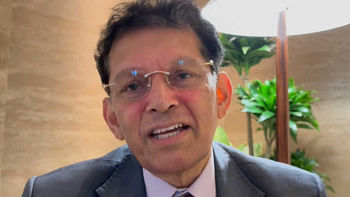BTRC examining need for separate 4G licence
The telecom regulator is set to explore the option of allowing operators to provide 4G services with their existing 3G licences, said a top official.
The 2100 megahertz band, which is currently used for 3G services, can be used for 4G as well. The 4G technology, also known as Long Term Evaluation technology, is a faster data service than 3G.
"The matter will be analysed in depth," said Shahjahan Mahmood, chairman of Bangladesh Telecommunication Regulatory Commission.
The legal and licensing wing will lead the issue in association with the engineering and operation division and system and service division, he added.
The issue came to the surface after mobile operator Robi sought clarification from the BTRC in this regard in April as it was preparing for a merger with Airtel.
The government in 2013 sold spectrum in the 2100MHz band through an auction for 3G service with a condition that the spectrum can be used for 4G service. Both Robi and Airtel acquired 5MHz of spectrum each on the band.
Since the 2100MHz band is technology-neutral, Robi asked BTRC if a separate licence is needed to roll out 4G services from it.
If they are allowed to offer 4G services, then they can use 5 MHz for 3G and the other 5 MHz for 4G, officials of the operators said.
The 4G technology would have different parameters than 3G, so a new guideline is required, said a BTRC official.
Currently, mobile phone spectrums in the country do not enjoy technology neutrality, which is the option to use any spectrum for any type of service, although the mobile phone operators are demanding it for a long time.
Mobile phone operators are allowed to use the 1800MHz and 900MHz bands to provide 2G services and the 2100MHz band for 3G services.
The government now considers allowing technology neutrality so that the operators can use any spectrum for any type of telecom service.
After the merger, the new entity will be known as Robi, which will become the spectrum leader in the country's telecom industry by holding 39.8MHz spectrum in different bands.
The current market leader, Grameenphone, has 32MHz spectrum in different bands.
The government is also planning to hold an auction this year to sell additional 2G and 3G spectrum.

 For all latest news, follow The Daily Star's Google News channel.
For all latest news, follow The Daily Star's Google News channel. 



Comments